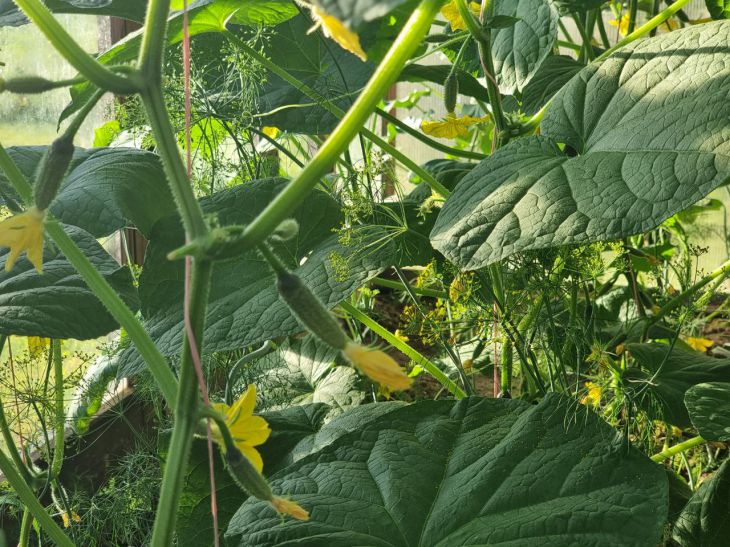Cucumbers are a vegetable crop that is very popular and in demand among gardeners and vegetable growers.
However, in order to get a good and long-lasting harvest of cucumbers, it is necessary to properly care for the plants and feed them in a timely manner.
In this article, you will learn how to feed cucumbers in early July to harvest them until late autumn.
Why do cucumbers need fertilizing in July?
In July, cucumbers enter a period of intensive fruiting, when many ovaries and fruits are formed on the plants.
In order for cucumbers to be large, sweet and crunchy, they need enough nutrients, which they extract from the soil. However, the soil may not be as rich or may be depleted from previous crops.

Therefore, it is important to additionally feed cucumbers in July to increase yield, strengthen the plant's immunity against diseases and pests, and extend the fruiting period until autumn.
What fertilizers should be used to feed cucumbers in July?
To feed cucumbers in July, you can use both organic and mineral fertilizers. Organic fertilizers contain a lot of nitrogen, which promotes the growth of green mass of plants.
Mineral fertilizers contain potassium and phosphorus, which are necessary for the formation of quality fruits. It is important to maintain a balance between these elements so as not to overfeed or underfeed the cucumbers.
One of the most accessible and safe organic fertilizers for cucumbers is mullein. It can be diluted with water in a ratio of 1:10 and watered under the root with 1 liter per bush. Mullein contains a lot of nitrogen, but it also contains potassium, phosphorus and other useful elements.
Another effective organic fertilizer for cucumbers is ash. It can be obtained from burning meadow grasses or weeds. Ash is rich in potassium, which improves the taste and sweetness of the fruit, and also protects plants from rot and spotting.
Ash can be diluted with water in a ratio of 1 glass per 10 liters and watered at the roots of plants or sprayed on the leaves. It is recommended to feed with ash at the beginning of flowering and during the fruiting period, no more than once every 10 days.
Ash can be used to feed cucumbers in dry or liquid form. Dry ash can be sprinkled on the soil surface or dug into grooves around the plants. Liquid ash can be obtained from an infusion or decoction of ash, which are diluted with water in certain proportions.
Proportions
To prepare an ash infusion, take 1 glass of ash (100 g) and pour 10 liters of water over it. Leave the mixture to infuse for a week, stirring occasionally. Before use, strain the infusion and dilute it with water in a ratio of 1:10.
To prepare an ash decoction, take 300 g of ash and boil it in 3 liters of water for 30 minutes. Then strain the decoction and add 50 g of soap shavings. Dilute the decoction with water in a ratio of 1:3.
Step-by-step cooking instructions
• Choose the right type of ash for feeding cucumbers. It is best to use ash from burning meadow grasses, weeds or potato tops, as it contains a lot of potassium.
• Decide which method of feeding you want to use: dry or liquid. The dry method is simpler and faster, but the liquid method is more effective and safer for plants.
• If you have chosen the dry method, then simply sprinkle the ash on the surface of the soil or dig it into the grooves around the plants. 100 g of ash is enough for 1 square meter of the garden bed.
• If you have chosen the liquid method, then prepare an infusion or decoction of ash according to the proportions and instructions specified above. Before use, dilute the solution with water to the desired concentration.
• Feed cucumbers with ash when watering at the roots or spraying on the leaves. Do this no more than once every 10 days.








